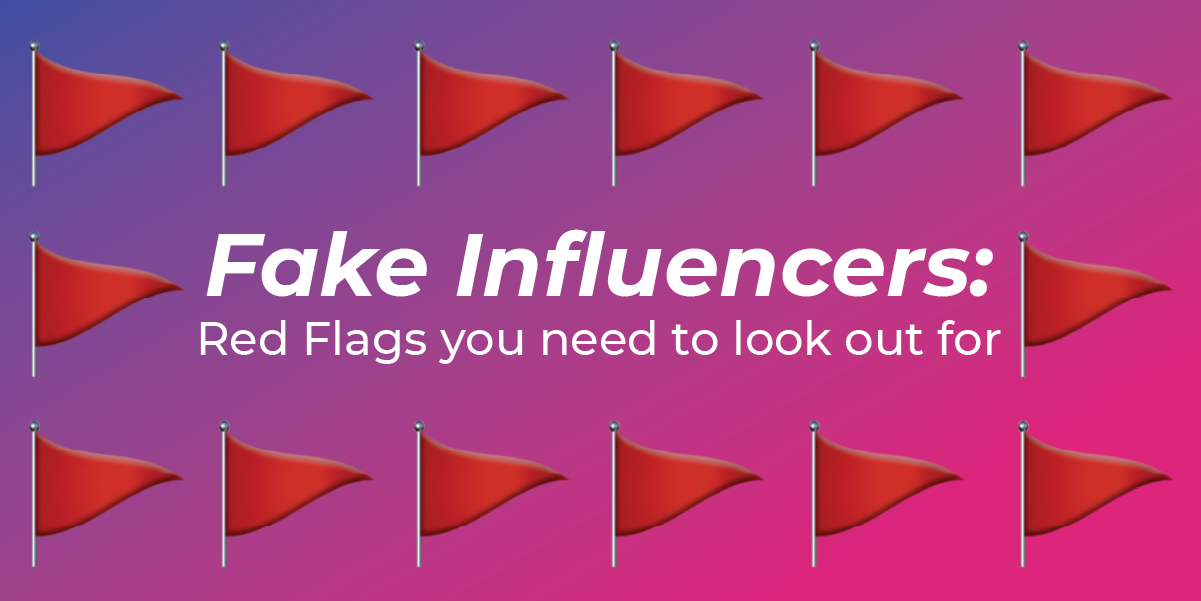According to ANA’s The State of Influence Report, 60% of marketers vet influencers for fraud, and an astounding 40% either don’t or don’t know if they do. Influencer fraud is not something to ignore. It cost businesses over $1 billion in 2019.
Want to avoid poorly spent influencer marketing budgets or even working with a poor influence agency? Here are 4 red flags to look for in order to avoid collaborating with the fake influencers.
1. Low Engagement Rate
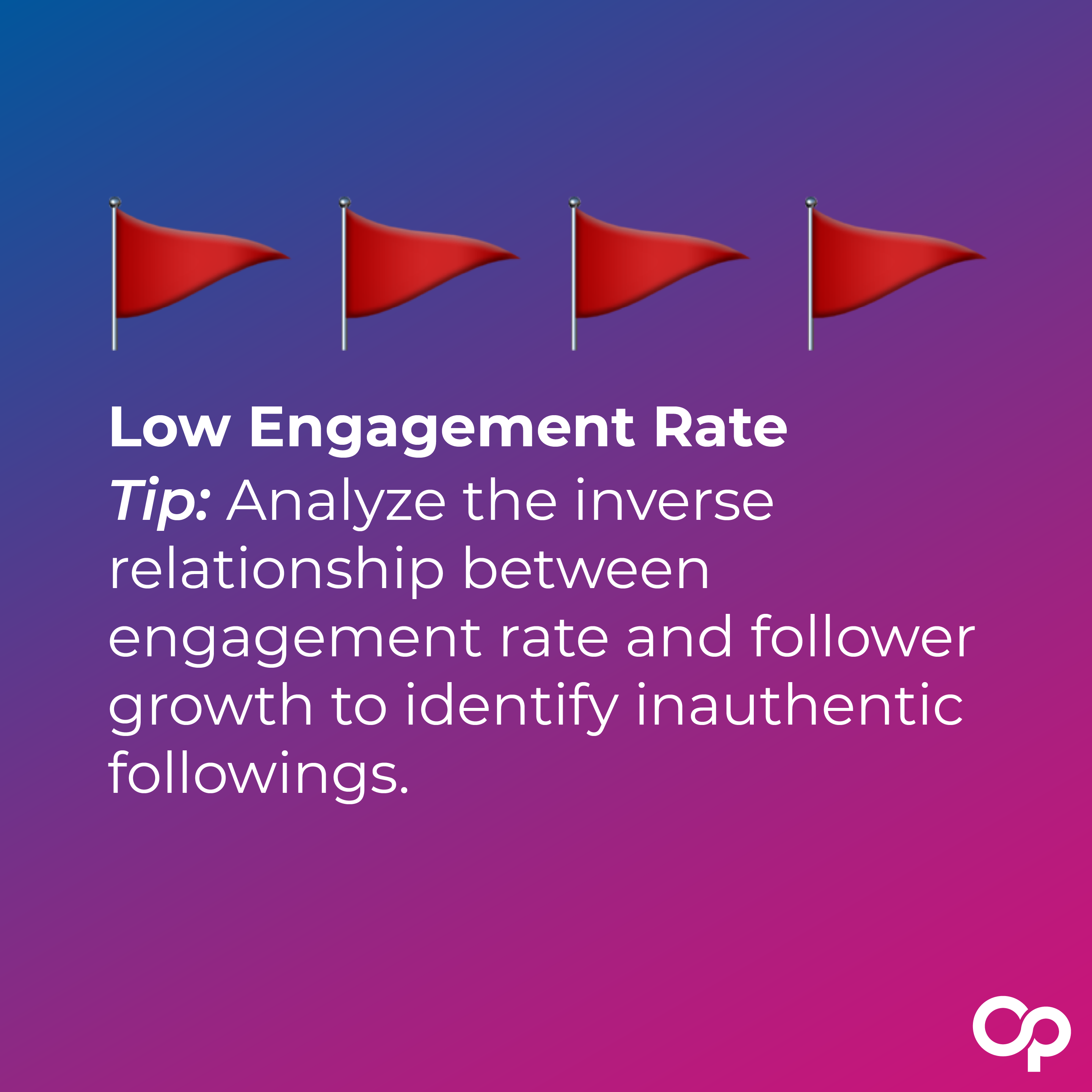 Tip: Analyze the inverse relationship between engagement rate and follower growth to identify inauthentic followings.
Tip: Analyze the inverse relationship between engagement rate and follower growth to identify inauthentic followings.
Add the number of comments to the number of likes and divide by the number of followers. Multiply that number by 100 to get a percentage. Average engagement rates vary across industries, but an engagement rate below 1%–3% is an initial warning sign that someone might have purchased followers.
2. Low Impression Rate
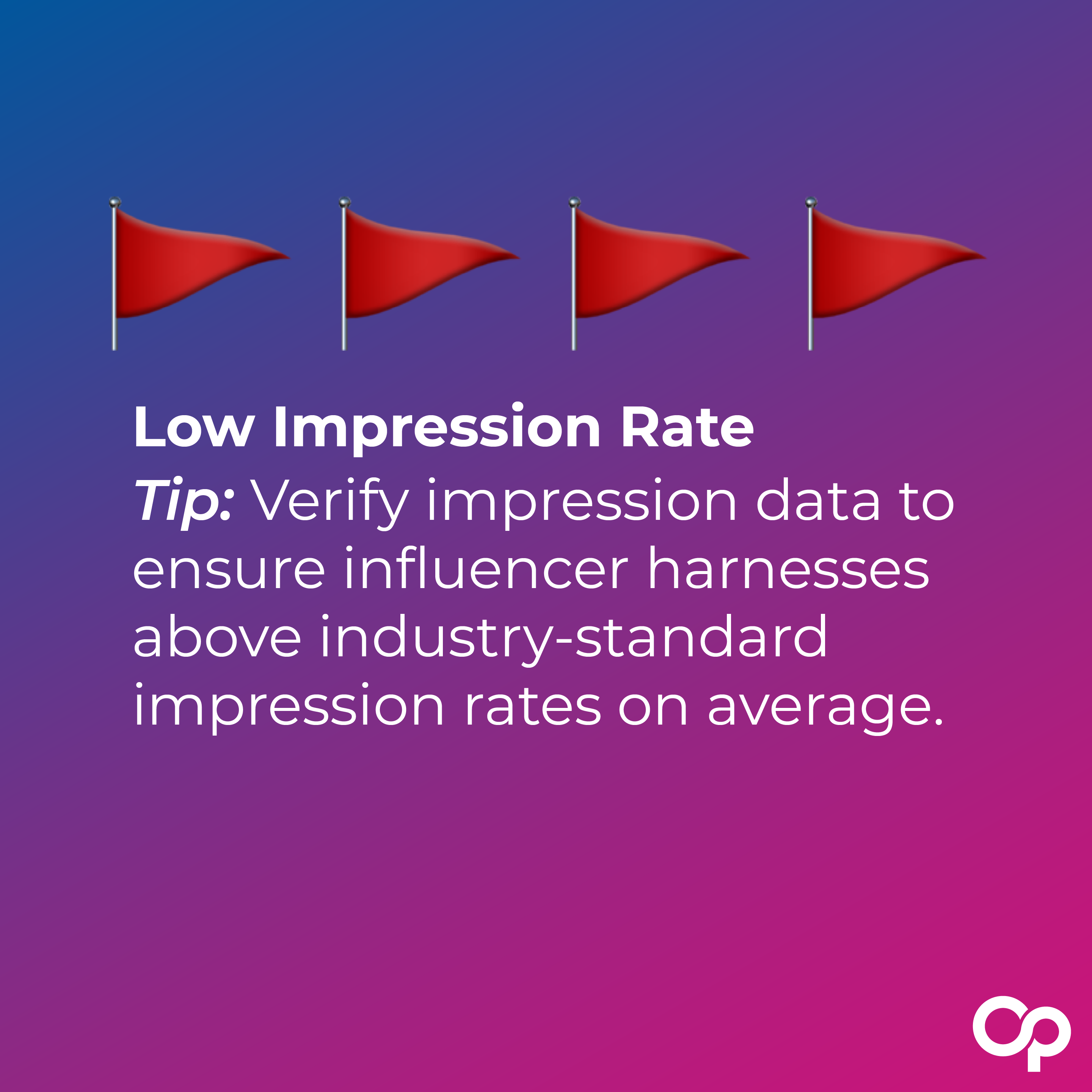 Tip: Verify impression data to ensure influencer harnesses above industry-standard impression rates on average.
Tip: Verify impression data to ensure influencer harnesses above industry-standard impression rates on average.
Impressions refer to the total number of times when users were exposed to the social media content.
3. Odd Audience Demographics
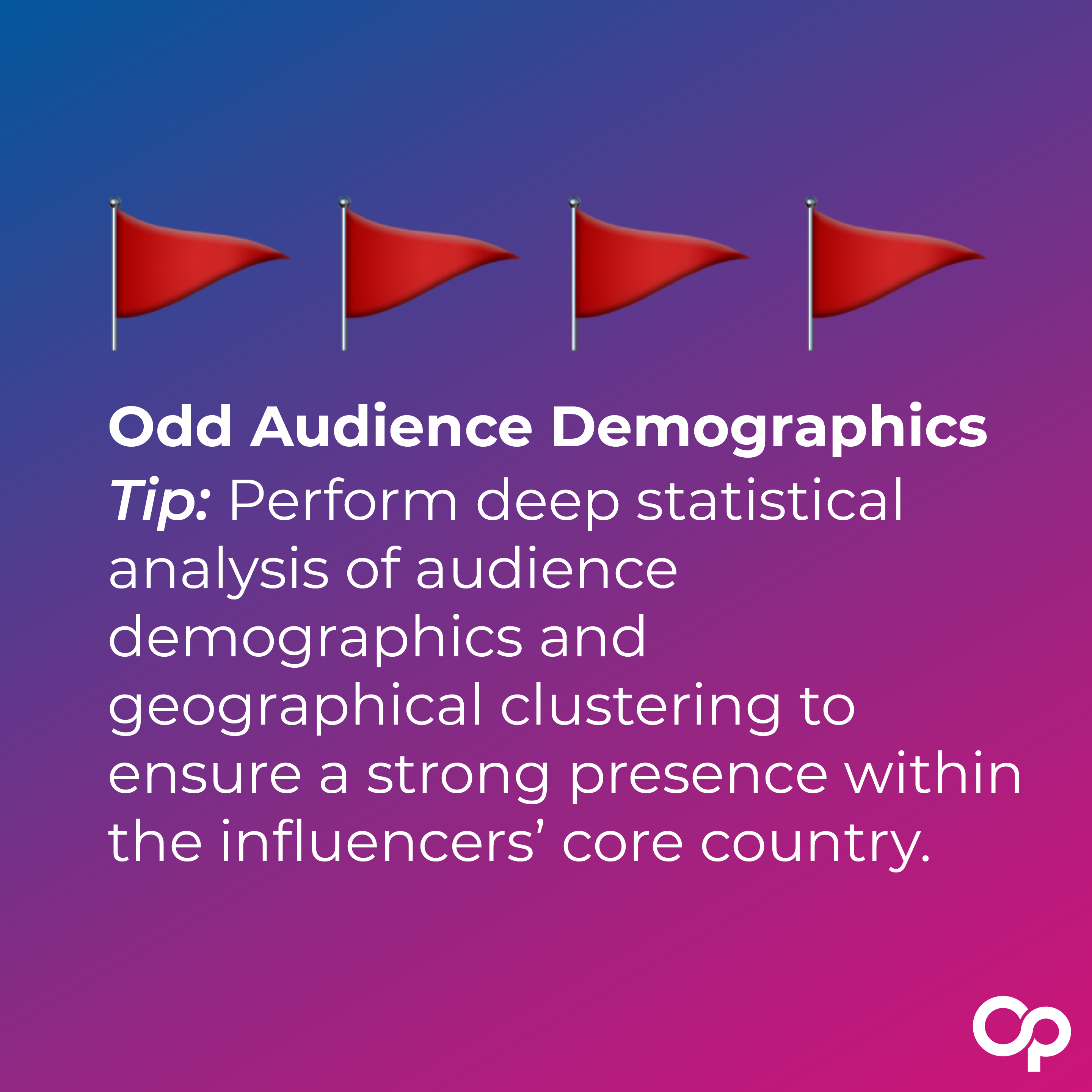 Tip: Perform deep statistical analysis of audience demographics and geographical clustering to ensure a strong presence within the influencers’ core country.
Tip: Perform deep statistical analysis of audience demographics and geographical clustering to ensure a strong presence within the influencers’ core country.
If their primary audience demographics are from another country, that could indicate that they bought fake followers.
4. Emoji + Comment Spam
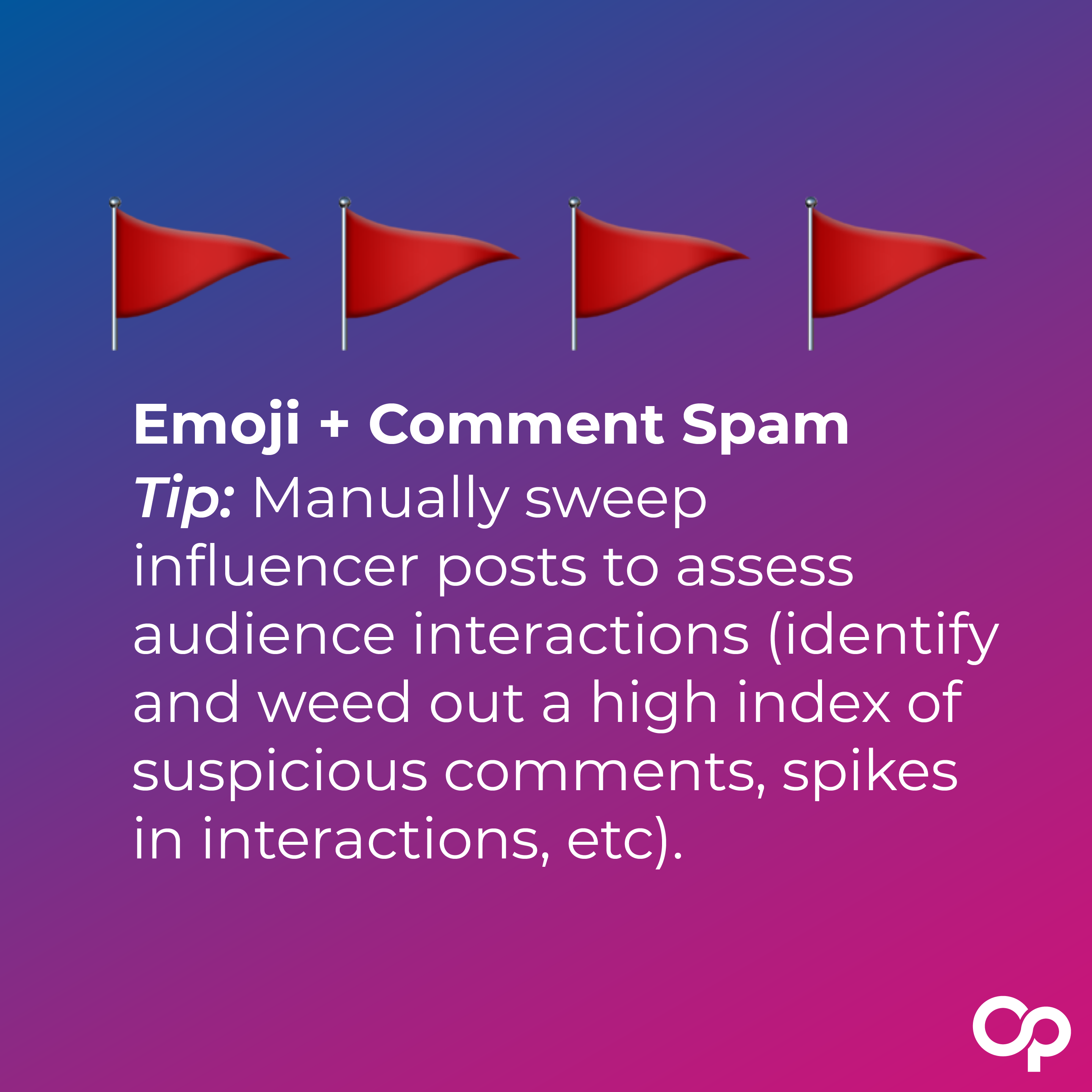 Tip: Manually sweep influencer posts to assess audience interactions (identify and weed out a high index of suspicious comments, spikes in interactions, etc).
Tip: Manually sweep influencer posts to assess audience interactions (identify and weed out a high index of suspicious comments, spikes in interactions, etc).
Be on the lookout if a majority of their comments are solely emojis or if there are short, generic comments like “great pic”. These are inevitable on any profile, but be wary of the ones with an excess amount.
Platform Efforts
One thing to note and remember is that marketers are not alone in this battle. Social media platforms also play a vital part in flagging and disabling fake accounts. Here are some of their efforts:
Facebook makes it their goal to remove as many fake accounts on their platform as they can. Their technology helps them detect and block millions of attempts to create fake accounts every day, and those blocked accounts are not included in metrics they report.
In 2019, they improved their ability to detect/block fake accounts, now able to prevent those accounts from ever being created to begin with. Prevalence for fake accounts continues to be estimated at approximately 5% of worldwide monthly active users on Facebook.
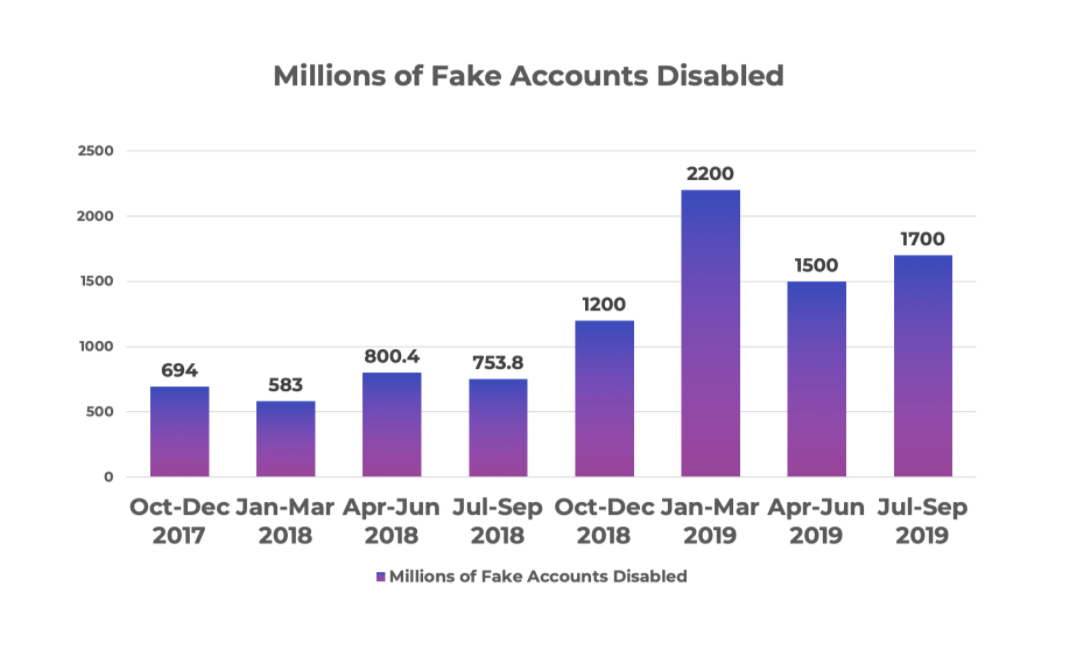
Many a Instagram influencer agency has seen Instagram taking down fake accounts since at least 2014, but increased their efforts at the end of 2018 when they announced they would be cracking down on accounts using third-party automated apps. They built machine learning tools to help identify those accounts and remove the inauthentic likes, follows and comments generated by the apps. Those users are then notified and asked to secure their account by changing their password.
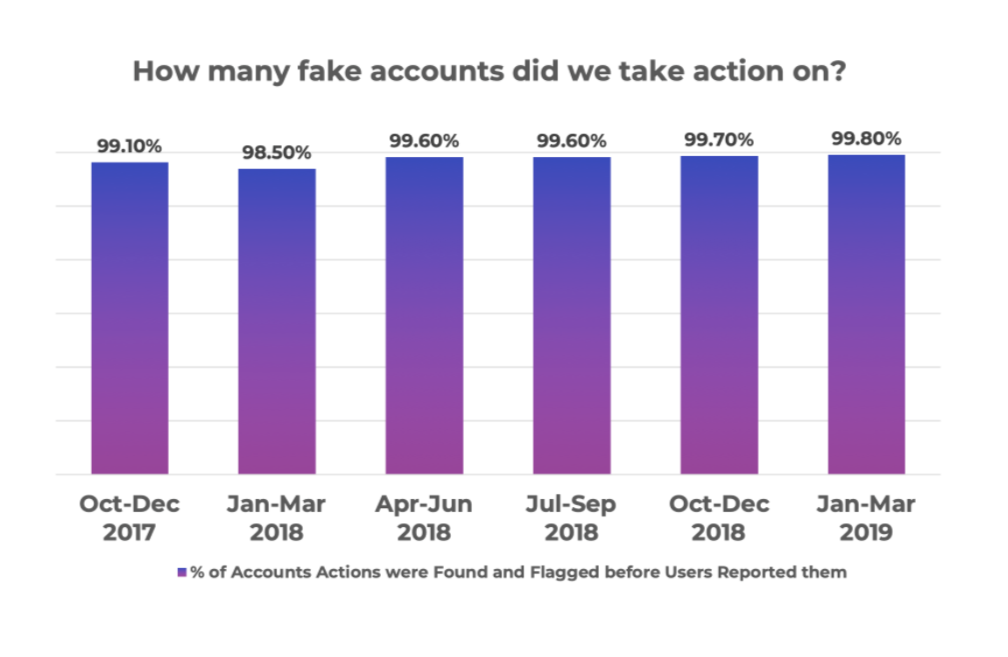
In 2018, Twitter also increased their focus on developing machine learning tools that identify and take action on networks of spammy or automated accounts automatically. In May ‘18, their systems identified and challenged more than 9.9 million potentially spammy or automated accounts per week. They also suspended more than 142K malicious apps and as a result, spam reports across Twitter dropped.

YouTube
YouTube has constantly strived to improve how they combat fake video views. Back in 2014, they began periodically auditing and validating video view counts, removing fraudulent views as new evidence comes to light. In 2018, YouTube found and removed millions of fake subscribers. They also announced they now do not delete views, but essentially freeze view counts of a video unless the audit has been done to verify the video views of a suspected video. Their fraud detection systems are in place to differentiate bot views from human views.
Fraudulent activity comes in many forms. Whether it’s bots or click farms, marketers must protect their clients’ investments from suspicious or fraudulent activity. But with the right technology, a global influencer agency can cut through the noise and target real potential customers that are likely to resonate with your brand.
Contact us today, we’d love to hear from you!

